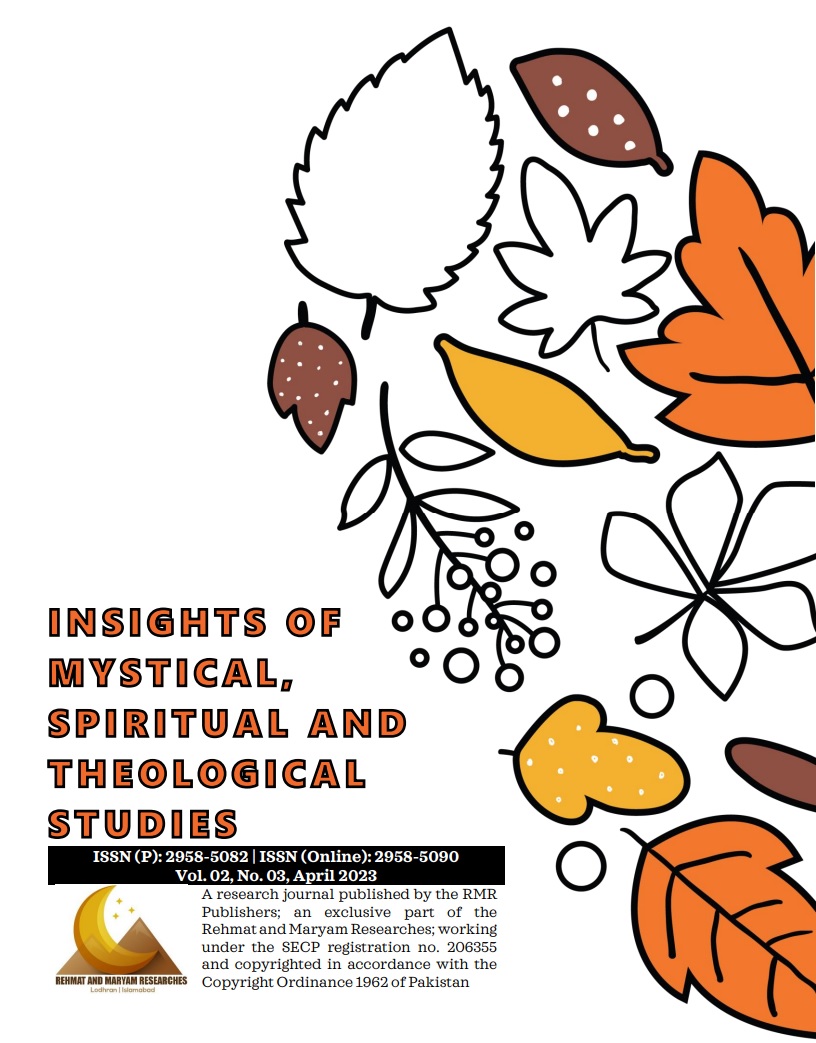Shiv Temple in Azad Kashmir; an Example of Interfaith Associations since Hindu Shahi Regime (7th-11th Century)
Keywords:
Hindu Shahi Dynasty, Lord Shiva, Lord Ganesha, Kabul Valley, King Jayapala, Tourist EconomyAbstract
The Shiv temple in Azad Kashmir has a rich history that dates back centuries, with the temple serving as a place of worship for Hindus, Buddhists, and Muslims. This joint history offers a unique opportunity to promote tourism in the region, which can facilitate the local population's growth through the tourist economy. This study evaluates how the Shiv temple’s historical and cultural significance can attract visitors from various religious and cultural backgrounds. The temple’s unique architecture, as well as the surrounding natural beauty of Azad Kashmir, can offer an enriching experience to tourists. The region’s rich history and diverse cultural heritage can also be showcased through various tourism initiatives, such as cultural festivals and guided tours.
This is the universal fact that tourism can play a significant role in creating employment opportunities for the local population, particularly in the hospitality and service sectors. By following this hypothesis, this study traces a way to boost the local economy and help reducing poverty in the region. The promotion of tourism can also lead to the development of infrastructure and amenities, such as hotels and restaurants, which can further enhance the tourist experience and contribute to the local economy's growth.
References
AJK-Government. (2018). Azad Jammu & Kashmir Tourism Policy-2018. MUZAFFARABAD: Directorate General of Tourism & Archaeology Department, Azad Kashmir.
DAWN. (2019). Hindu council delegation visits ancient temple site in AJK. Daily DAWN. Retrieved from https://www.dawn.com/news/1490436
EFSAS. (2020, October). Ethnic, Cultural and Religious Diversity in Jammu & Kashmir: Perceptions on unity and discord - Demise of Kashmiriyat. Retrieved from European Foundation for South Asian Studies: https://www.efsas.org/publications/study-papers/ethnic,-cultural-and-religious-diversity-in-jk-unity-and-discord/
Hasan, S. K. (2008). Pakistan: Its Ancient Hindu Temples and Shrines. Islamabad: National Institute of Historical and Cultural Research, Centre of Excellence, Quaid-i-Azam University.
History-Pakistan. (2023). Hindu Shahi Dynasty. Retrieved from History Pakistan: https://historypak.com/hindu-shahi-dynasty/
Jeratha, A. (2000). Forts and palaces of the Western Himalaya. New Delhi: Indus Publishing Company.
Khan, I. (2017). Exploring the Settlement Archaeology of the Hindu Shahi Dynasty (c. 822 CE to C. 1026 CE) in North-western Pakistan. London: University of Leicester.
Paras, J. A. (2019, March 28). HISTORICAL TEMPLE OF GODDESS SHARDA AT KASHMIR NEELUM VALLEY. Retrieved from Kashmiriat: https://kashmiriat.com/historical-temple-of-goddess-sharda-at-kashmir-neelum-valley/
Petrie, C. (2020). Resistance at the Edge of Empires: The Archaeology and History of the Bannu basin from 1000 BC to AD 1200. London: Oxbow Books.
Zahra. (2023). Hindu temples in Azad Kashmir. Retrieved from Pinterest: https://www.pinterest.com/pin/526921225130393041/
Downloads
Published
How to Cite
Issue
Section
Categories
- Mystic, Spiritual and Theological Beliefs
- History of Mystries, Spiritualism(s) and Religions
- Inter-Faith Harmony and Dialogue among Faiths, Beliefs, Religions and Sects.
- Mystical, Spiritual and/or Theological Reflections on Culture, Economics, Education, Lifestyle, Politics and Society
- Myths and Religion
- Civilization(s) and Religion
- Relationship between Religion and the State
- Religious Ethnicities
- Religious Anthropology
- Peace, Progress and Prosperity within the Religiously Divided State and Society
License
Copyright (c) 2023 Insights of Mystical, Spiritual and Theological Studies

This work is licensed under a Creative Commons Attribution-NonCommercial-NoDerivatives 4.0 International License.

